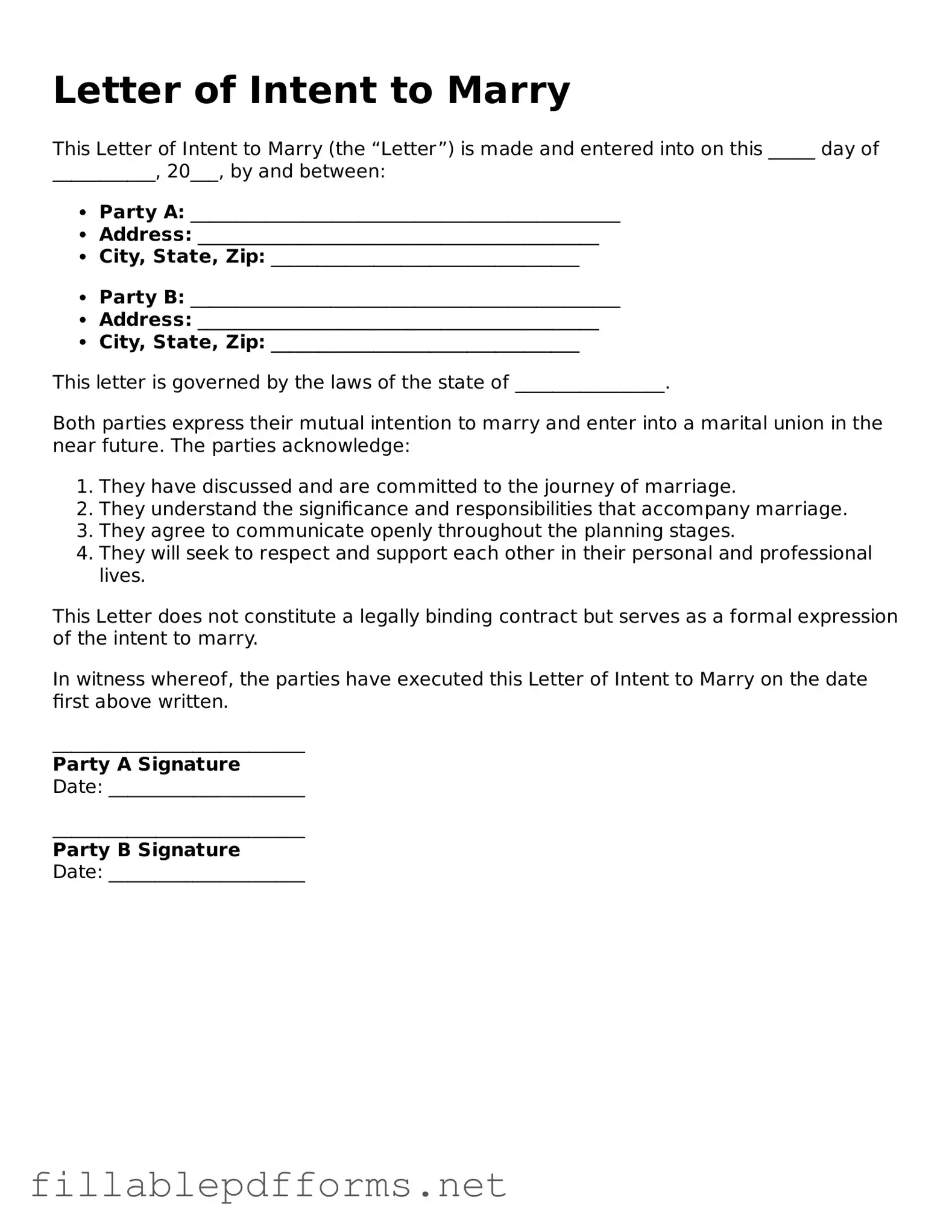Blank Letter of Intent to Marry Template
The Letter of Intent to Marry form is a document that expresses a couple's intention to marry in the future. This form serves as a formal acknowledgment of their commitment and can be an important step in the planning process. By outlining the couple's intentions, it helps clarify their mutual goals and expectations.
Launch Editor Here
